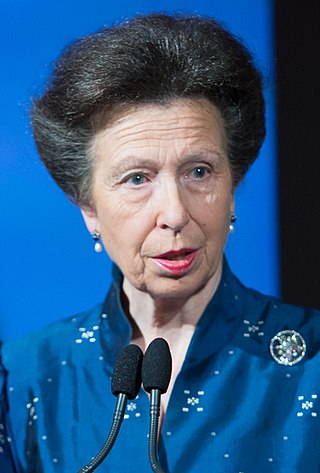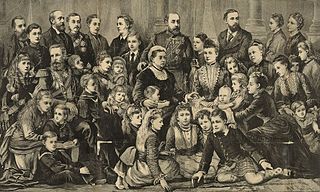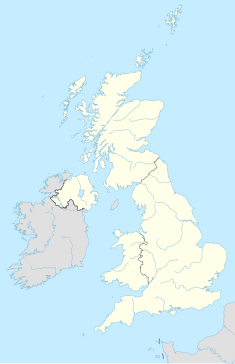
Prince Henry, Duke of Gloucester, was the third son and fourth child of King George V and Queen Mary. He served as Governor-General of Australia from 1945 to 1947, the only member of the British royal family to hold the post.

Prince Arthur, Duke of Connaught and Strathearn, was the seventh child and third son of Queen Victoria of the United Kingdom and Prince Albert of Saxe-Coburg and Gotha. He served as Governor General of Canada, the tenth since Canadian Confederation and the only British prince to do so.

Birgitte, Duchess of Gloucester, is a Danish born member of the British royal family. She is married to Prince Richard, Duke of Gloucester, a grandson of George V. They have three children.

Frogmore is an estate within the Home Park, adjoining Windsor Castle, in Berkshire, England. It comprises 33 acres (130,000 m2), of primarily private gardens managed by the Crown Estate. It is the location of Frogmore House, a royal retreat, and Frogmore Cottage. The name derives from the preponderance of frogs which have always lived in this low-lying and marshy area near the River Thames. This area is part of the local flood plain. Its large landscaped gardens are Grade I listed on the Register of Historic Parks and Gardens.

Princess Louise Margaret of Prussia, later Duchess of Connaught and Strathearn VA CI RRC DStJ, was a member of the House of Hohenzollern and of the British royal family. She served as the viceregal consort of Canada while her husband, Prince Arthur, Duke of Connaught and Strathearn, served as the governor general, from 1911 to 1916.

The use of the title of Princess of the United Kingdom of Great Britain and Northern Ireland is entirely at the will of the sovereign as expressed in letters patent. Individuals holding the title of princess are styled "Her Royal Highness" (HRH). On 18 April 1917, Frederica of Hanover, the newest granddaughter of Wilhelm II, German Emperor was styled a British princess from birth, even though Germany and Britain were fighting in World War I. Before the First World War, British princesses also held additional German titles, such as princesses of Hanover by virtue of being male-line descendants of George III; or princesses of Saxe-Coburg and Gotha, duchess of Saxony, by virtue of being male-line descendants of Prince Albert of Saxe-Coburg and Gotha. George V issued letters patent on 30 November 1917, to restrict the automatic assignment of the title "princess" and the use of the style "Royal Highness" to the following persons:
Colonel-in-chief is a ceremonial position in a military regiment. It is in common use in several Commonwealth armies, where it is held by the regiment's patron, usually a member of the royal family.

The Museum of Military Medicine, formerly the Army Medical Services Museum, is located in Keogh Barracks, on Mytchett Place Road, Mytchett, Surrey, England.

Aldershot Garrison, also known as Aldershot Military Town, is a major garrison in South East England, between Aldershot and Farnborough in Hampshire. The garrison was established when the War Department bought a large area of land near the village of Aldershot, with the objective of establishing a permanent training camp for the Army. Over time, this camp grew into a military town and continues to be used by the Army to the present day. It is home to the headquarters of the Army's Regional Command, and it is also the administrative base for the 101st Logistic Brigade. The garrison plays host to around 70 military units and organisations.

British Military Hospitals were established and operated by the British Army, both at home and overseas during the 19th and 20th centuries, to treat service personnel. They varied in size, purpose and permanence.

The Prince Consort's Library in Aldershot Military Town in the English county of Hampshire was founded by Prince Albert to contribute to the education of soldiers in the British Army. Today it is the military specialist library of the Army Library Service, specialising in the provision of information on current military topics, political subjects and international relations in support of operations, intelligence, training and education in the Armed Forces. It is a Grade II listed building.

Queen Victoria, the British monarch from 1837 to 1901, and Prince Albert had 9 children, 42 grandchildren, and 87 great-grandchildren.

The Golden Jubilee of Queen Victoria was celebrated on 20 and 21 June 1887 to mark the 50th anniversary of Queen Victoria's accession on 20 June 1837. It was celebrated with a Thanksgiving Service at Westminster Abbey, and a banquet to which 50 European kings and princes were invited.

St George's Chapel at Windsor Castle in England is a castle chapel built in the late-medieval Perpendicular Gothic style. It is a Royal Peculiar, and the Chapel of the Order of the Garter. St George's Chapel was founded in the 14th century by King Edward III and extensively enlarged in the late 15th century. It is located in the Lower Ward of the castle.
Brigadier Dame Cecilie Monica Golding, was a British Army nurse and nursing administrator who rose to Colonel Commandant, Matron-in-Chief and Director of the Queen Alexandra's Royal Army Nursing Corps (QARANC).

Initially the Herbert Hospital, renamed in 1900, the Royal Herbert Hospital was built as a restorative facility for British veterans of the Crimean War, and remained a military hospital until 1977. It was situated in southeast London, on the south side of Woolwich Common, on the western slopes of Shooter's Hill, in the Royal Borough of Greenwich. Today the former hospital buildings form a residential development known as the Royal Herbert Pavilions.

The Louise Margaret Hospital was opened in 1898 to cater for British Army soldiers' wives and children in the military town of Aldershot Garrison. It started with fifty-three beds and about half of its cases were maternity patients. In 1958 it became the Louise Margaret Maternity Hospital, and closed in 1995. The old hospital is part of a group of historic buildings with legal protection and, as of 2016, is expected to be used in a redevelopment project.

The 2022 Trooping the Colour ceremony was held on Thursday 2 June 2022, as part of the Platinum Jubilee celebrations of Queen Elizabeth II. Over 1,400 parading soldiers, 200 horses, and 400 musicians came together in the traditional parade to mark the Queen's Official Birthday, which usually takes place on the second Saturday of June. It was the final Birthday Parade to take place under the reign of Elizabeth II before her death on 8 September later that year.

























